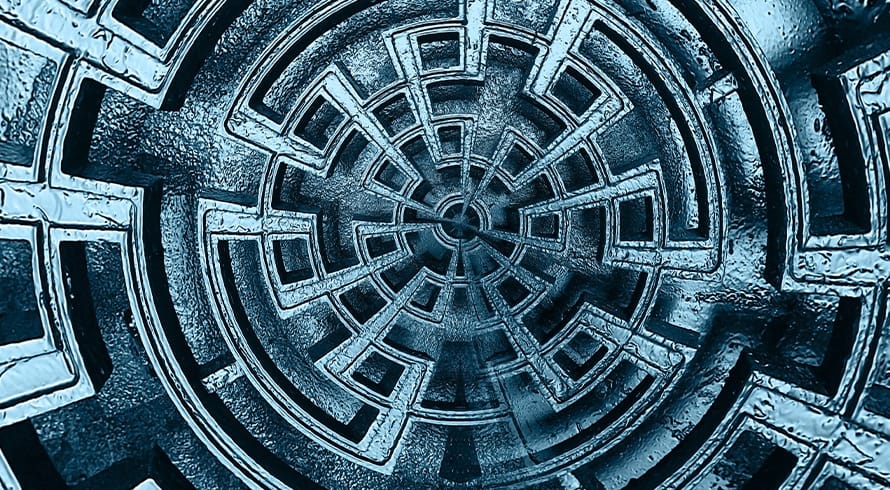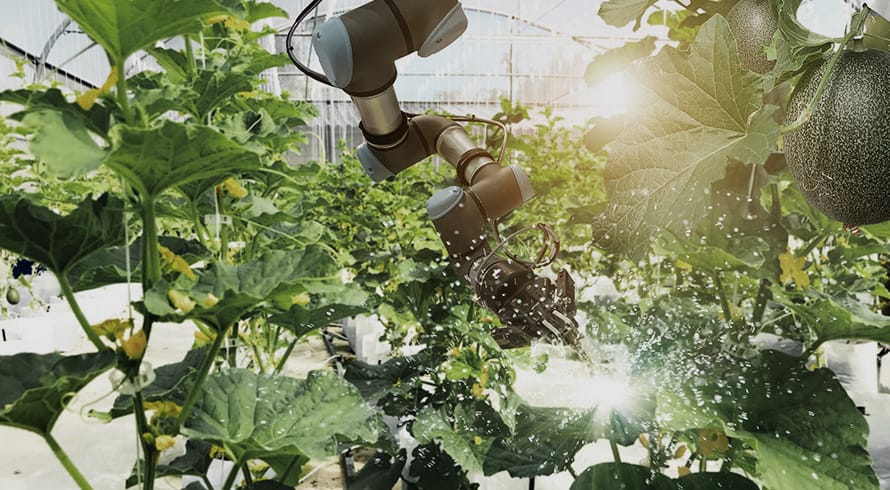The environmental (and other) legislative transitions to a low-carbon economy in South Africa
At a glance
- Within the context of South Africa's transition to a low-carbon economy and the need to resolve the current energy crisis, there have been a plethora of environmental and other legislative developments since 2019 to expedite the construction of renewable energy generation projects and increase grid capacity.
- The recent expansion of renewable energy installations can be seen as a significant contribution towards South Africa's shift towards a low-carbon economy. However, the transition towards a low-carbon economy cannot be done without the reform of enabling legislation.
- This article outlines some of the critical environmental legislative developments of the last few years.
History: Environmental legislation and electrical infrastructure
Prior to the advent of the broad spectrum of environmental legislation that we have in South Africa today, the main selection criterion for the site of a new coal-fired power station was arguably the proximity of the site to coal-rich mining areas. Other than being under a possible legal obligation to apply for a water permit in terms of the repealed Water Act 54 of 1956 and a registration certificate in terms of the repealed Atmospheric Pollution Prevention Act 45 of 1965, the site selection of a new power station and the construction thereof was not too constrained by the need to obtain multiple environmental authorisations, licences and permits, and other environmental considerations. Similarly, electricity transmission lines were probably constructed on the basis of the cheapest and shortest possible route to transmit the electricity from the power stations to villages, towns, and cities for onward distribution to homes within those villages, towns and cities.
This lack of environmental legislative oversight afforded Eskom the ability, during a 20-year period between the mid-1960s and mid-1980s, to complete the construction of numerous coal-fired power stations such as Camden, Grootvlei, Arnot, Kriel (one of the largest coal-fired power stations in the southern hemisphere at the time), Hendrina and Duvha, and commence the construction of Matimba, Matla, Lethabo, and Kendal coal-fired power stations. During the same period, the construction of the Gariep hydro-power station, the Drakensberg Pumped Storage Scheme and two gas turbine stations in Cape Town and East London were completed, and construction of the Koeberg nuclear power station commenced. In order to reduce the costs associated with the transport of coal to the Western Cape and other non-coal-bearing provinces, work also commenced on the establishment of a national grid, including the construction of the transmission line to connect Mpumalanga and Cape Town, which was completed in less than two years. The final piece in the national grid puzzle was completed in 1973 when the Eastern Cape was connected to the country’s main source of power generation and supply.
Low-carbon economy transition and enabling legislative reform
Until recently, it would have taken approximately the same amount of time to apply for and obtain environmental authorisation for the Mpumalanga to Cape Town transmission line as it took Eskom to complete the construction of the transmission line. However, considering South Africa’s international commitment to achieve a fixed target for greenhouse gas emissions levels of 350–420 metric tonnes of carbon dioxide equivalent by 2030, as well as the load shedding crisis that has been (and may still) gripping the country, there was a realisation of the need to expedite the environmental authorisation, licence and permit application processes so as to significantly increase the available pool of renewable energy projects, which can be built relatively cheaply and quickly. It was further recognised that the available electricity transmission grid was fast becoming depleted, which realisation became a reality when 23 wind projects could not be considered for preferred bidder status during Bid Window 6 because the projects were located in areas with no available grid capacity.
Within the context of South Africa’s transition to a low-carbon economy and the need to resolve the current energy crisis, the plethora of environmental and other legislative developments since 2019 to expedite the construction of renewable energy generation projects (both Renewable Energy Independent Power Producer Procurement Programme projects and private offtake projects) and increase grid capacity while at the same time striking a balance with the need to uphold the principle of sustainable development is to be welcomed. Some of the critical environmental legislative developments of the last few years are outlined below.
Generic and pre-approved environmental management programme
The confirmation that where applications for environmental authorisation relate to the development or expansion of substations and overhead electricity transmission and distribution infrastructure, then such application must utilise the generic and pre-approved environmental management programme (EMPr) that provides for the relevant measures to mitigate against the environmental impacts associated with the development or expansion of this infrastructure. The effect of this legislative development is threefold insofar as it reduces the time required for the actual environmental impact assessment process by eliminating the need to develop a standalone EMPr. Moreover, there is no longer a need for the competent authority to review every EMPr, thereby expediting the decision-making process. Finally, the existence of a generic and pre-approved EMPr removes the possibility for appeals to be submitted by interested and affected parties against the approval of the content of the EMPr.
DFFE Screening Tool
The Department of Forestry, Fisheries and the Environment (DFFE) introduced the National Web-based Environmental Screening Tool (DFFE Screening Tool), which is a geographically based web-enabled application that allows developers to screen their proposed site for any environmental sensitivities. The DFFE Screening Tool identifies related exclusions or specific requirements, including specialist studies applicable to the proposed site or development based on the national sector classification and the environmental sensitivity of the site. The Minister of the DFFE (Minister) published a notice on 5 July 2019 making it mandatory to include a DFFE Screening Tool report with all environmental authorisation applications. The introduction of the DFFE Screening Tool harmonises the environmental impact assessment process as the required specialist studies are identified and ensures that environmental authorisation applications address the necessary environmental aspects and streamline the application process.
Renewable energy development zones
Another development is the establishment of 11 renewable energy development zones (REDZs). Development of a large-scale wind or solar photovoltaic energy facility within one of the REDZs that also requires the development of electricity transmission and distribution infrastructure (inclusive of sub-station development) – the greater part of which falls within the REDZs and which trigger specified listed activities as well as any other listed and specified activities necessary for the realisation of such facility and infrastructure – can follow the shortened basic assessment environmental authorisation application process. The transmission and distribution infrastructure component of the project can further utilise the generic and pre-approved EMPr as part of the application. Furthermore, the timeframe available to the competent authority to reach a decision on an application that falls within the above scope has also been reduced to 57 days. All of these measures have curtailed the entire environmental authorisation application and decision-making process.
Transmission and distribution corridors
Seven strategic transmission and distribution corridors for the development of large-scale electricity transmission and distribution infrastructure (inclusive of substation development) have been created. The effect of this is that if the development of the electricity and distribution infrastructure triggers the specified listed activities, as well as any other listed or specified activities relevant to such infrastructure, then any application for an environmental authorisation to undertake such listed activity within the greater part of one or more of the strategic transmission or distribution corridors must follow the basic assessment process. Moreover, any application must utilise the generic pre-approved EMPr as part of the application. In addition, the time available to the competent authority to make a decision on an application has been truncated to 57 days, further streamlining the environmental authorisation application and decision-making process.
Standard for the Development and Expansion of Power Lines and Substations
Subsequent to the establishment of the seven corridors and the curtailment of the time periods associated with the environmental authorisation application and decision-making process, the DFFE published a further notice in July 2022 confirming that it had developed a Standard for the Development and Expansion of Power Lines and Substations within Identified Geographical Areas (Standard). The identified geographical areas set out in the Standard are the seven strategic transmission and distribution corridors. The Standard assists developers to achieve planning, routing, siting and remediation objectives that will ensure the acceptability of the effects of the development of overhead powerlines and substations on the environment, independently from the need for an assessment by the competent authority. This ensures that the environmental management and mitigation surrounding overhead powerlines and substations are harmonised and ensure best practice procedures are implemented.
Battery storage and solar PV exclusion norms
On 27 March 2024, the Minister adopted both the Norm for the Exclusion of Identified Activities Associated with the Development and Expansion of Battery Storage Facilities in Areas of Low or Medium Environmental Sensitivity and the Norm for the Exclusion of the Development and Expansion of Solar Photovoltaic Facilities in Areas of Low or Medium Environmental Sensitivity(Solar Exclusion Norm) (collectively the Exclusion Norms). The Exclusion Norms set out the specific listed activities that, if triggered, are entirely excluded from the requirement to obtain an environmental authorisation. The Exclusion Norms further provides that the exclusion extends to any associated listed activity necessary for the realisation of such facilities. Although the requirement to obtain an environmental authorisation is excluded, the developer is still required to register the battery storage facility or solar photovoltaic facility with the relevant competent authority, which in turn is required to process the registration within 10 days of receiving the registration and supporting documentation.
Amendments to the electricity generation licence requirements
Schedule 2 to the Electricity Regulation Act 4 of 2006 (ERA) sets out the requirements for an electricity generation licence. Previously, the ERA provided that a person did not require an electricity generation licence where the electricity generation capacity was below 1MW (Exemption Threshold). The Exemption Threshold was increased from 1MW to 100MW in 2021, was subsequently removed in its entirety in 2023, and now merely requires registration with the National Energy Regulator of South Africa and adherence to the Distribution Code and Transmission Grid Code.
Solar feed-in tariff
The South African Government published the Energy Action Plan in July 2022 (Energy Action Plan), which sets out the plan to end load shedding in South Africa. The Energy Action Plan outlines five specific actions to address the current electricity shortfall, with one of the actions being to “unleash businesses and households to invest in rooftop solar”. In order to encourage rooftop solar installations at business and household levels, Eskom developed a feed-in tariff for small-scale embedded generators. The solar-feed-in tariff is set to encourage the installation of rooftop solar as households and businesses can financially benefit from feeding electricity back into the grid.
Electricity Regulation Amendment Bill
The Electricity Regulation Amendment Bill (ERA Bill), which is set to amend the ERA and radically transform the structure of the electricity sector, was passed by the National Assembly on 14 March 2024. The ERA Bill is set to provide an open market platform that will allow for competitive electricity trading in South Africa and to establish the Transmission Systems Operator, also known as the National Transmission Company of South Africa (NTCSA). The NTCSA will be charged with procuring electricity from the various power producers in South Africa, thereby further opening the market for private electricity generators.
The Department of Mineral Resources and Energy estimates that load shedding will still persist until 2028; however, given the significant recent strides towards transitioning to a low-carbon economy and considering the above and ongoing legislative reform, it finally seems that there is indeed some light at the end of the load shedding tunnel
The information and material published on this website is provided for general purposes only and does not constitute legal advice. We make every effort to ensure that the content is updated regularly and to offer the most current and accurate information. Please consult one of our lawyers on any specific legal problem or matter. We accept no responsibility for any loss or damage, whether direct or consequential, which may arise from reliance on the information contained in these pages. Please refer to our full terms and conditions. Copyright © 2025 Cliffe Dekker Hofmeyr. All rights reserved. For permission to reproduce an article or publication, please contact us cliffedekkerhofmeyr@cdhlegal.com.
Subscribe
We support our clients’ strategic and operational needs by offering innovative, integrated and high quality thought leadership. To stay up to date on the latest legal developments that may potentially impact your business, subscribe to our alerts, seminar and webinar invitations.
Subscribe



